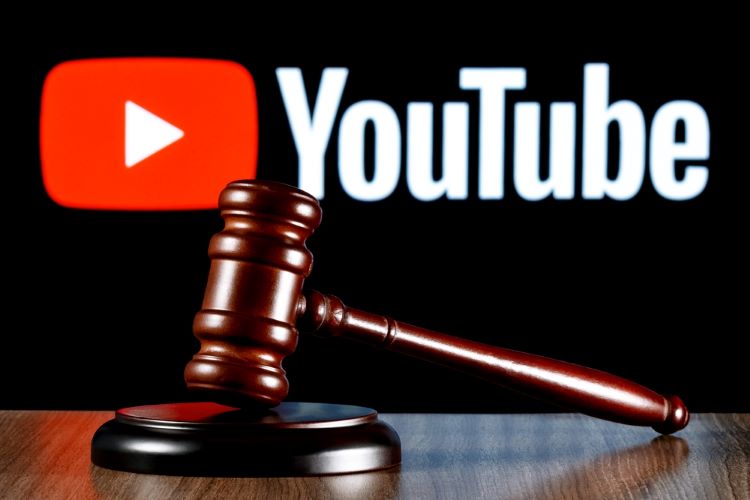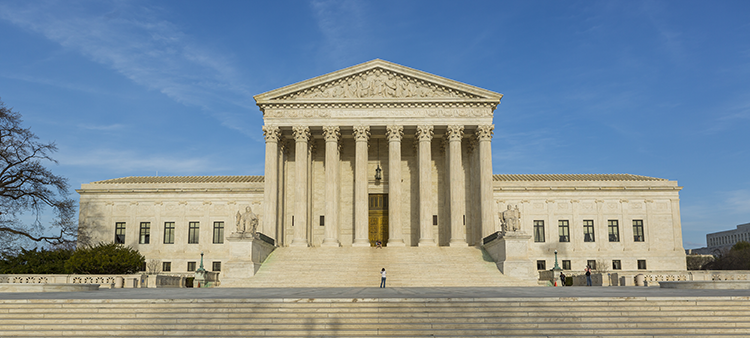A dark—and potentially illegal—side of YouTube

Image from Shutterstock.
This article was originally going to be about the dangers of TikTok (I’m not a fan), and I may still come back to that in a future column. But as I prepared to write, my research led me to a more general and widespread issue I felt compelled to cover.
When I began the TikTok research, I found myself on a few different YouTube channels discussing “icebergs”—no, not the slow-moving, slowly (but exponentially quickly) melting variety; rather, the informative, illustrated category. Let me explain.
Icebergs
Icebergs, for the intents and purposes of this column, are graphics created by users to demonstrate the different layers or levels of a particular topic. Often, the information the content creator wishes to convey is overlaid on an image of an actual iceberg to help further their point. And their point, to be fair, can vary depending on their audience.
The iceberg will often have knowledge commonly known or widely accepted at the top—it’s the “tip of the iceberg,” after all. As the data moves downward toward the surface of the water and then makes its way into the deep, dark depth of the ocean, the information becomes less and less known or available—it’s the details that we, the audience, cannot see or detect in most situations. “How deep does it go?” is always the question.
Although not implicitly stated and perhaps unknowingly accomplished, this method of modeling data most likely owes quite a bit of credit to the “iceberg theory” often attributed to Ernest Hemingway and the “iceberg metaphor” generally ascribed to Sigmund Freud. However, the information these iceberg infographics cover isn’t always as romanticized as that of the author and founder of psychoanalysis, whose methods very probably influenced the current fad.
‘Anything for the clicks’
I have found icebergs across a broad range of subjects. A few examples include:
• “The Google Maps Anomaly Iceberg”
• “The Archaeology Iceberg”
• “The Super Mario 64 Iceberg”
• “The Rabbit Hole Iceberg”
• “The YouTube Iceberg”
• “The Universe Iceberg”
• “The Conspiracy Theory Iceberg”
You could probably find an iceberg for almost any topic you might think of. Honestly, give it a try. I went on YouTube and typed in various queries for “(insert noun) iceberg” and consistently received results. I found “The Banana Iceberg Explained”—who would have thought?
But more important for this column, that title—specifically, the “explained” portion—is very telling. You see, in response to this relatively new iceberg infographic phenomenon, there have been multiple genres of videos concerning them. YouTubers have begun creating videos that set out to either debunk various icebergs, explain them or simply react to the content they convey.
That’s all fine and dandy when we talk about something as innocuous as Super Mario 64 (an iteration of the famous Super Mario video game franchise created for the Nintendo 64 gaming system). The trouble and potential danger, though, comes from content creators who develop videos regarding much more nefarious icebergs.
The dangers of ‘research’
This danger can rear its head in a variety of ways. The hazard is especially prevalent in the iceberg explanation and reaction videos. Essentially, YouTubers have to search out information regarding the content listed in the iceberg to explain it. But even more concerning are the reaction-style videos, which necessitate finding the entries listed in the iceberg to “react” to them—if the content creators are being honest (admittedly, a big if) as to what they are really reacting to.
One such reaction video I stumbled upon while researching my original TikTok topic dealt with a notable YouTuber watching and responding to one of the most banned videos on the internet, which is listed on various NSFL (not safe for life) or “worst (insert noun)” icebergs. According to him (and another guest-appearing YouTuber), the compilation video’s subject matter deals with child death and injury, and images from war zones specifically. Apparently, this particular banned video ends with photos from JonBenet Ramsey’s autopsy. The content creator described how he procured a copy of the compilation, and the method in which he received the footage seemed somewhat suspect to my trained eye.
For one, YouTubers (or anyone else) have to be aware of the inherent dangers of trying to get these files. Because they are not readily available on the “internet,” one has to put their faith in another (potentially) dubious individual and hope they acquire what they’re looking for. However, the dangers of being ripped off or hacked via payment are real and not worth the trouble, in my opinion. More important, though, is the risk of receiving something you weren’t asking for, such as illegal images or content.
And although this particular reaction video discussed in some detail the difference between illegal juvenile imagery and legal “gore-related” imagery, these individuals likely don’t have the same experience with overzealous prosecutors as someone who handles related matters for a living. Ultimately, it only takes one person’s perspective (if they hold the proper position) to potentially push probable cause. For example, the JonBenet Ramsey autopsy photos could arguably be considered juvenile pornography depending on the prosecution’s angle and other circumstantial evidence.
It might be a stretch, but who wants to take the risk of that type of fallout and possible penalty?
A fascination with the macabre?
To be clear, this isn’t a situation where I’m the pot calling the kettle black. I have no desire to see anything worse than what I have to view in the discovery I receive in some cases. I stumbled down this rabbit hole doing my research (I know—ironic, right?) into a topic for this column.
Nevertheless, that research led me to another aspect of online “information” that scares me, quite frankly. From my experience defending various types of criminal charges, I’m acutely aware of the horrible content available on the internet. Still, I wasn’t aware of how large an audience exists for some of this material, specifically the gore—or just how easily accessible it is. Being the parent of a young child, that accessibility may be what frightens me the most.
Still, the hope is that one won’t simply stumble upon the type of content I’m discussing here. It’s worrisome, though, that this all started from searching the phrase “worst TikTok” via YouTube. After reading “explanations” in the comments about why individuals were there viewing the videos, I learned not everyone was simply searching for shock value. Others had differing reasons, which often revolved around their mental and emotional well-being, such as: “Watching this makes me feel better about my life” or “It helps to see others in pain, too.”
I honestly hate that anyone feels so negative about their existence to the point they need to watch gore, torture or any other act of pain and loss to normalize what is going on in their mind. It reminds me of a young man I represented many years ago who explained that same mode of thinking to a judge during his sentencing. He had been convicted of possessing juvenile pornography and quite a bit of various other images that fit into this category of internet-underbelly material. He expounded on how he started viewing some of the objectionable-yet-legal material to make himself feel better about his own childhood abuse, and eventually, he fell down the rabbit hole into illegal, illicit imagery.
With a stern and unsympathetic face, the judge spelled out her misgivings with this “excuse.” She recounted how another defendant years earlier had made a similar argument, and she had given him probation; he then went on to brutally murder a young girl while on supervised release.
In the end, we need to be very conscious of the methods we use for research, but we also need to be mindful of the imagery and information we digest, whether technically legal or not.

Adam Banner
Adam R. Banner is the founder and lead attorney of the Oklahoma Legal Group, a criminal defense law firm in Oklahoma City. His practice focuses solely on state and federal criminal defense. He represents the accused against allegations of sex crimes, violent crimes, drug crimes and white-collar crimes.
The study of law isn’t for everyone, yet its practice and procedure seems to permeate pop culture at an increasing rate. This column is about the intersection of law and pop culture in an attempt to separate the real from the ridiculous.
This column reflects the opinions of the author and not necessarily the views of the ABA Journal—or the American Bar Association.



